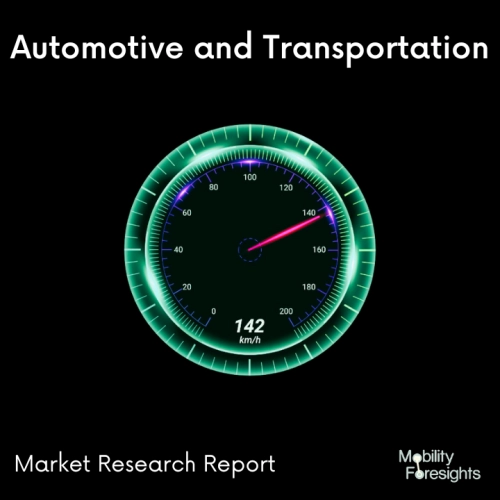
- Get in Touch with Us

Last Updated: Apr 25, 2025 | Study Period: 2022-2030
Automotive applications must be protected from harmful voltage transients like electrostatic discharges (ESD) and lightning in accordance with ISO requirements to ensure proper operation over the course of a vehicle's lifetime in severe settings.
If there is no protection, integrated circuits (ICs) that are typically rated for their ESD capacity according to Human Body Model (HBM) or Charged Device Model (CDM) standards will not be able to withstand the high currents and voltages stipulated in ISO standards.
Transient voltage suppressors (TVS) and application-specific discrete devices from ST are used to protect automotive data lines against ESD surges at the system level in accordance with IEC 61000-4-2.
ESD protection devices are produced with automotive-grade techniques and are certified to AEC-Q101 specifications.

The Global Automotive ESD protection market accounted for $XX Billion in 2021 and is anticipated to reach $XX Billion by 2030, registering a CAGR of XX% from 2022 to 2030.
New TrEOS ESD protection devices from Nexperia have been released; they can withstand high temperatures of up to 175°C and are AEC-Q101 approved for automotive use.
The new parts combine extremely low capacitance, which ensures great signal integrity, extremely low clamping, and high robustness for contemporary vehicle interfaces, just like all TrEOS components do.
Infotainment, multimedia, and ADAS systems with USB 3.2, HDMI, LVDS, SerDes, and SD-card interfaces are among the specific automobile uses.
The typical protection trade-off problem is solved by Nexperia's TrEOS ESD protection technology, which employs active silicon-controlled rectification.
Devices can endure surge and ESD pulses up to 10 A 8/20 s with a clamping voltage of just 3 V and a capacitance kept to 0.5 pF.The widely tested SOT23 package offers this sector-leading performance across the board.
The lowest capacitance ESD protection devices have been released by Taiwan Semiconductor.
For I/O ports (USB 2.0, USB 3.0, HDMI), audio systems, power ports, and a variety of additional ESD protection applications, the Series includes a wide range of SMD components in single and multiple, unidirectional and bidirectional versions.
The TESD Series offers protection at high-frequency data rates while preserving signal integrity thanks to its sector-leading low capacitance structure.
IEC61000-4-2 (ESD) 15 kV (air), 10 kV (contact), and IEC61000-4-5 (Lightning): 5.5 A (8/20s) are all repeating applications of IEC61000-4-2 (ESD) in I/O port applications that TESD Series devices can handle.
Moreover, for power port applications, these devices meet the 30 KV contact/air specifications. The Series also complies with all applicable international environmental standards.
For applications requiring high data rates at 3.3 V or other nominal operating voltages, the devices' ultra-low capacitance is crucial.
The optimum ESD protection devices are those that can withstand multiple ESD discharges while having little to no impact on regular operation.
The ESD is absorbed and safely clamped-dissipated through the TVS diodes by using these high-performance protection devices, saving costly damage and enhancing the dependability and survivability of the end equipment.
| Sl no | Topic |
| 1 | Market Segmentation |
| 2 | Scope of the report |
| 3 | Abbreviations |
| 4 | Research Methodology |
| 5 | Executive Summary |
| 6 | Introduction |
| 7 | Insights from Industry stakeholders |
| 8 | Cost breakdown of Product by sub-components and average profit margin |
| 9 | Disruptive innovation in the Industry |
| 10 | Technology trends in the Industry |
| 11 | Consumer trends in the industry |
| 12 | Recent Production Milestones |
| 13 | Component Manufacturing in US, EU and China |
| 14 | COVID-19 impact on overall market |
| 15 | COVID-19 impact on Production of components |
| 16 | COVID-19 impact on Point of sale |
| 17 | Market Segmentation, Dynamics and Forecast by Geography, 2022-2030 |
| 18 | Market Segmentation, Dynamics and Forecast by Product Type, 2022-2030 |
| 19 | Market Segmentation, Dynamics and Forecast by Application, 2022-2030 |
| 20 | Market Segmentation, Dynamics and Forecast by End use, 2022-2030 |
| 21 | Product installation rate by OEM, 2022 |
| 22 | Incline/Decline in Average B-2-B selling price in past 5 years |
| 23 | Competition from substitute products |
| 24 | Gross margin and average profitability of suppliers |
| 25 | New product development in past 12 months |
| 26 | M&A in past 12 months |
| 27 | Growth strategy of leading players |
| 28 | Market share of vendors, 2022 |
| 29 | Company Profiles |
| 30 | Unmet needs and opportunity for new suppliers |
| 31 | Conclusion |
| 32 | Appendix |